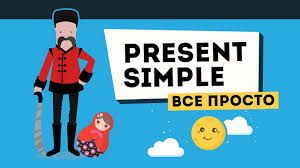

Theme Present Simple
Tasks
1 Write out 5-15 active words and make your own sentences with them.
2 Make 5-15 questions using active words.
3 Make a plan for discussion.
4 Speak aboutPresent Simple
5 Do a test in Quizlet https://quizlet.com/480376334/test
You may do exercises with flashcards before writing a test.
https://quizlet.com/ru/480376334/simple-verbs-for-present-simple-flash-cards/
6 Revise grammar material at the themePresent Simple and do a test.
The simple present (also called present simple or present indefinite) is a verb tense which is used to show repetition, habit or generalization. Less commonly, the simple present can be used to talk about scheduled actions in the near future and, in some cases, actions happening now. Read on for detailed descriptions, examples, and simple present exercises.
Simple Present Forms
The simple present is just the base form of the verb. Questions are made with do and negative forms are made with do not.
In the third person singular, -s or -es is added. Questions are made with does and negative forms are made with does not.
Complete List of Simple Present Forms
Simple Present Uses
USE 1 Repeated Actions
Use the simple present to express the idea that an action is repeated or usual. The action can be a habit, a hobby, a daily event, a scheduled event or something that often happens. It can also be something a person often forgets or usually does not do.
Examples:
USE 2 Facts or Generalizations
The simple present can also indicate the speaker believes that a fact was true before, is true now, and will be true in the future. It is not important if the speaker is correct about the fact. It is also used to make generalizations about people or things.
Examples:
USE 3 Scheduled Events in the Near Future
Speakers occasionally use simple present to talk about scheduled events in the near future. This is most commonly done when talking about public transportation, but it can be used with other scheduled events as well.
Examples:
USE 4 Now (Non-Continuous Verbs)
Speakers sometimes use the simple present to express the idea that an action is happening or is not happening now. This can only be done with non-continuous verbs and certain mixed verbs.
Examples:
Simple Present Tips
ADVERB PLACEMENT
The examples below show the placement for grammar adverbs such as: always, only, never, ever, still, just, etc.
Examples:
ACTIVE / PASSIVE
Examples:
Оставьте свой комментарий
Авторизуйтесь, чтобы задавать вопросы.